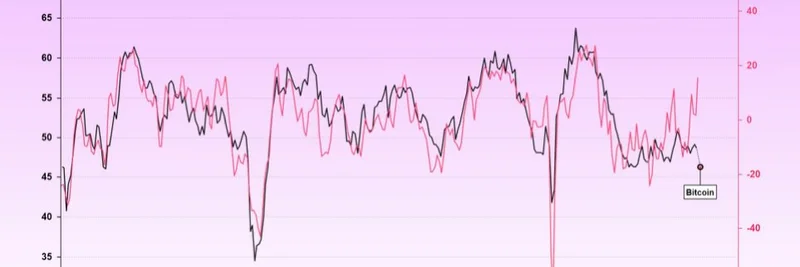If you've been in the crypto space long enough, you've probably heard about the infamous "4-year cycle" – that rhythmic pattern where Bitcoin and other assets seem to boom and bust every four years or so. But according to macro analyst and crypto commentator MartyParty (@martypartymusic), it's not some mystical crypto phenomenon. Instead, it's deeply tied to the broader business cycle and global liquidity flows.
In a recent tweet that's sparking discussions across the community, MartyParty breaks it down simply: the 4-year cycle is essentially the liquidity cycle. All assets, not just crypto, tend to appreciate when fresh liquidity enters the market. Right now, he says, we're at the bottom of this business cycle, but things are about to turn around starting December 1, 2025. That's when new liquidity creation kicks in, and crypto – including volatile meme tokens – could see a disproportionate boost compared to previous cycles.
The chart MartyParty shared (originally from sources like Julien Bittel at Real Vision) illustrates this point vividly. It overlays the US Empire State Manufacturing Survey (a key economic indicator) with Bitcoin's implied ISM pricing. You can see how these lines track each other closely over the years, with a notable dip in recent times. The "Bitcoin" label at the bottom signals where we might be heading – potentially into negative territory before a rebound fueled by incoming liquidity.
For those new to these terms, liquidity refers to the availability of money in the financial system. When central banks or governments inject more money (through policies like quantitative easing), it often flows into riskier assets like stocks, real estate, and yes, cryptocurrencies. The business cycle is the natural ebb and flow of economic expansion and contraction, typically lasting several years. MartyParty's take is that crypto's ups and downs aren't isolated; they're amplified reflections of these macro forces.
What does this mean for meme tokens specifically? Meme coins thrive on hype, community, and rapid capital inflows. In a liquidity-rich environment, retail investors and institutions alike might pile in, driving up prices for favorites like Dogecoin, Shiba Inu, or emerging contenders. MartyParty predicts not only a wash of liquidity through crypto but also an influx of new long-term holders building their reserves. If history repeats, this could supercharge the meme sector, where quick gains often attract fresh blood.
The tweet has garnered mixed reactions. Some users, like @DChopra84405 and @jclanoix, pointed out the need to credit original chart creators like @BittelJulien and @RaoulGMI from Real Vision. Others questioned the timeline or tied it to broader market manipulations. For instance, @PalaCastle30 asked how this squares with past views on CEX (centralized exchange) influences, while @AleksYastreb sought clarity on why December 1 marks the pivot.
Skeptics like @SatsEchoed joked that "crypto is dead," but optimistic voices echoed the sentiment. @ecook1048d called it "music to my ears," and @TylerHODL17 noted crypto's unique pull alongside liquidity factors.
MartyParty's advice? Just hang tight through November. As liquidity ramps up, it could usher in a new era for crypto enthusiasts, especially those eyeing meme tokens for their high-reward potential. Whether you're a seasoned trader or a newcomer building your knowledge base, keeping an eye on macro indicators like these can give you an edge in the blockchain world.
For more insights on meme tokens and crypto trends, stick with Meme Insider – your go-to resource for the latest in blockchain news and analysis.


